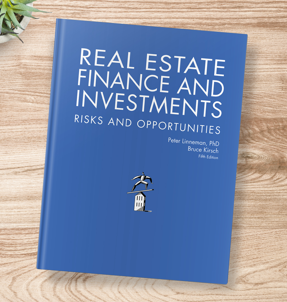|
Listen to this post if you prefer
|
Wharton Emeritus Professor Peter Linneman explains how General Growth Properties and Lehman both used Chapter 11, each in its own way.
DR. PETER LINNEMAN: Chapter 11 bankruptcy allowed, most notably, general growth properties the opportunity to go in and say, wait, we have asset value way in excess of our liabilities. Just about our cash flow, we have tremendous amount of cash flow. Apply even a distress cap rate to that, and we have asset value way in excess of our liabilities. Don’t allow the Lenders to come in and take our assets when there’s nobody making a loan, and in effect steal our value. And they went to chapter 11 protection, and it worked out exactly as planned, namely, given time, everybody is going to get paid, and given time, the values recovered, et cetera. And by the way, the thing I always point out to students is, never forget that when you sign a lease, when you sign a mortgage, when you sign a labor contract, those contracts can always be trumped by bankruptcy law- by their very nature, all of them. Bankruptcy law trumps contract law. That’s the way the law is set up, so you just have to remember that when you’re looking at those contracts.
BRUCE KIRSCH: And so you mentioned how general growth properties had taken a path to get through bankruptcy, in essence, and then they emerged from bankruptcy.
DR. PETER LINNEMAN: Yes, they emerged, it took them about 18, 20 months. When they did that they lost control of a lot of dimensions of their business during that period. Because under bankruptcy chapter 11 you have to get approval for major expenditures from the bankruptcy judge, so that the bankruptcy judge is satisfied that you’re not taking money out to benefit employees at the expense of creditors, you’re not impairing value by your decisions, et cetera. So suddenly you’re relying on the court to make a lot of determinations on how you run your business, which is scary, and it’s expensive, because everybody has to hire lawyers to argue, this is what I want to do, and here’s why. And all those lawyers are being paid, the expense is enormous. But that’s what the system is set up for, and in the case of general growth, it really worked exactly as designed. It preserved long term value. It was an expensive process with a lot of lawyers being paid a lot of money, a lot of accountants and consultants being paid a lot of money. But in the end, the shareholders, the equity holders did not get squeezed out on a temporary liquidity issue when there was plenty of value in a longer term sense.
BRUCE KIRSCH: This is an example of the success of the chapter 11 structure, and how it can help to shepherd a company through a time of severe liquidity, and then reemerge. What is the difference between what happened there and where we see currently Lehman Brothers, which went bankrupt, and declared bankruptcy in 2008- and yet we still hear about them in the news as selling assets such as Archstone Communities. Now is Lehman potentially going to become a going concern again?
DR. PETER LINNEMAN: Lehman emerged from bankruptcy a few months ago. They have a board, as part of their emergence from bankruptcy they have to liquidate the company, that was the agreement. So the agreement was they stayed in bankruptcy, I believe about three years, they emerged from bankruptcy. There is a board with a fiduciary duty to maximize the value for the new shareholders, which are essentially all the old lenders. So the lenders became shareholders as part of the coming out of chapter 11. The new deal turned out that the assets weren’t worth more than the liabilities. The old shareholders were wiped out. The old lenders became the new shareholders. Under a plan, the company came out of bankruptcy, and became a liquidating company. They are literally a liquidating company, there are certain dimensions of the US tax code that then apply, but they’re a liquidating company and the board evaluates, should we sell this now or should we hang on a little bit, and they are literally liquidating the company down. And I would argue that was a very complex and expensive chapter 11, but it again worked, it took time, it preserved value. It was a difficult process because of the high leverage involved. The reason the high leverage made it very difficult is, imagine a company that has 70% loan devalue. You’ve got a 30% value cushion where Bruce comes in and says, I think it’s worth somewhere between 65 and 75, and you could say, OK, this is worth trying to save. Now imagine a company with 97% debt on 100 value, and you’re going, boy, the margin of error, just isn’t very much. And it turned out that the extreme leverage meant that the assets were worth less than the liabilities, but they could still work it through– say no, we’ve now decided, shareholders, you don’t have any skin in the game, therefore you’re wiped out– but you did it in an orderly manner that you looked at it, a prescribed manner. And then you said, there are rules, how the debt holders get dealt with, and then that was dealt with, and then they decided to liquidate. So my understanding is Lehman is not an operating concern, it’s a liquidating concern, but that does mean they have to operate certain assets until they liquidate.
BRUCE KIRSCH: And so it seems like the key differentiator between the general growth scenario and the Lehman scenario is the huge gulf in between the net worth of the company, whether it was liquid or not.
DR. PETER LINNEMAN: Yeah, I’ll give you a real simple number that I kept being struck by, is that the interest coverage ratio at general growth– I’m doing this from memory– was something like 1.6 times, that is they had 60% more income than needed to cover their interest payments. When that is true, throughout most of history, it means that the equity– I mean if you go through all your math, and all your analysis, and all your norms– it means the equity is worth somewhere between 20% and 40% of the capital stack, with debt being worth the rest. Well, when I had 1.6 interest coverage, you’d say, even if my income fell by 10%, I still have 1.44 interest coverage, and even if the interest rate went up some, I still had 1.3 interest coverage. And at 1.3 interest coverage you’d normally have 20, 25% of the company being equity, and the rest being debt. So you knew that there was a lot of equity there. The problem in general growth was no one would roll over and renew any loan. So their job was to show up to the courts, and say, Your Honor, we’re willing to pay all our loans in full, we’re willing to honor all our contracts in full, we simply need them to change one term, namely, extend the loan two more years, and give this window of crisis a chance to go by to where people are willing to make loans again. We’ll pay everybody back in full, we can pay all the interest on it while we’re going, we can honor all our contracts. The difference in Lehman is, if you did it, they didn’t have enough income to cover their interest payments, and it wasn’t just temporary they didn’t have enough income to cover their interest payments, it was a sustained situation. The liabilities were more than the assets, and then you had to first determine if that’s true and then given that’s true, what do you do from there.
BRUCE KIRSCH: And so at the end of the day, does that determination come from a judge?
DR. PETER LINNEMAN: In the end it’s done by a judge. It’s done by the various claimants, equity holders, Lenders, and other creditors, kind of negotiating, but it’s all occurring under a prescribed set of priorities under the law, subject to the blessing of a bankruptcy judge that only does this type of stuff. And so in the process they have to bless it, and getting all those negotiations together where people can be bless it, ultimately, takes time and lawyers.






Outstanding. Thanks for this!
Our pleasure Pike; thanks for the comment!